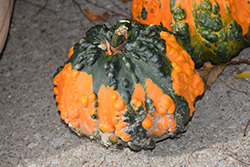Fri & Sat 8am - 8pm
Sun 8am - 7pm
Anytown, USA 12345
fax: 261.787.0463
e-mail: info@successgc.com


Plant Finder

Height: 16 inches
Spacing: 24 inches
Sunlight:
![]()
Hardiness Zone: (annual)
Description:
A fun and eye catching, semi bush variety, children are drawn to these; small, bicolored pumpkins look like they are dipped in dark green paint; becomes fully orange when mature; although edible, it is recommended mainly for décor
Edible Qualities
Batwing Pumpkin is an annual vegetable plant that is commonly grown for its edible qualities. It produces small orange round fruit with dark green variegation and orange flesh which are typically harvested when mature. The fruits have a sweet taste and a firm texture.
The fruit are most often used in the following ways:
- Cooking
- Baking
- Freezing
Planting & Growing
Batwing Pumpkin will grow to be about 16 inches tall at maturity, with a spread of 5 feet. When planted in rows, individual plants should be spaced approximately 24 inches apart. This vegetable plant is an annual, which means that it will grow for one season in your garden and then die after producing a crop.
This plant is typically grown in a designated vegetable garden. It should only be grown in full sunlight. It does best in average to evenly moist conditions, but will not tolerate standing water. This plant is a heavy feeder that requires frequent fertilizing throughout the growing season to perform at its best. It is not particular as to soil type or pH. It is somewhat tolerant of urban pollution. Consider applying a thick mulch around the root zone over the growing season to conserve soil moisture. This is a selected variety of a species not originally from North America.; however, as a cultivated variety, be aware that it may be subject to certain restrictions or prohibitions on propagation.
